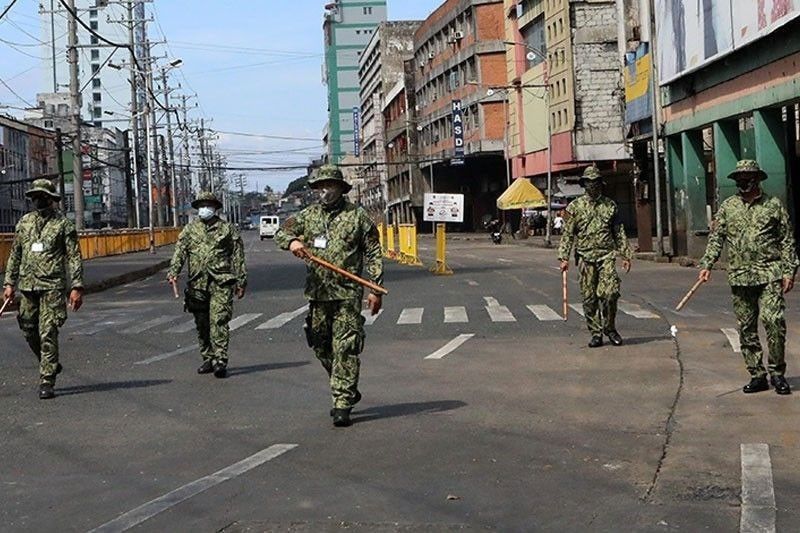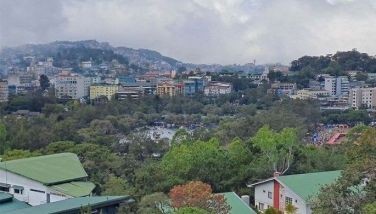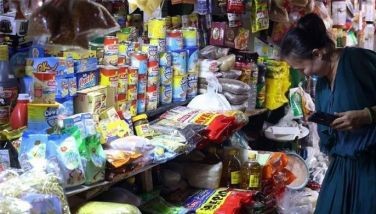‘Lockdown possible in case of post-holiday COVID-19 surge’

MANILA, Philippines — The Department of Health (DOH) warned citizens that the government could be forced to reimpose a strict lockdown after the Christmas season if cases of the coronavirus overwhelm the country’s healthcare system.
Health Undersecretary Maria Rosario Vergeire, however, said another lockdown would be the last option for the government to control the surge and transmission of COVID-19 nationwide.
Interviewed Wednesday on “The Chiefs” aired on One News/TV5, she said the decision to impose a lockdown would depend not only on the number of COVID cases, but also on the capacity of the health system to accommodate the rising number of patients.
“When I say we assess the situation, it is not just the number that we talk about, we talk about the capacity of the health system,” Vergeire pointed out.
Last August, President Duterte decided to revert the National Capital Region (NCR), Cavite, Bulacan and Rizal to modified enhanced community quarantine (MECQ) after medical frontliners called for a two-week lockdown to prevent the collapse of the health system.
During that time, Vergeire said almost all hospitals in Metro Manila were full and patients were just accommodated in tents as COVID cases soared dramatically.
However, Vergeire stressed that the possibility of lockdown is yet to be put on the table for discussion.
“But there are still no discussions on these restrictions and all. We are just trying to plug the possibility that there might be a surge because of this holiday season,” she noted.
Vergeire said the whole country, including Metro Manila at this time is “low risk,” but there are several areas that the DOH is closely monitoring for rising COVID cases and hospital capacity nearing the “danger zone.”
The DOH reported that COVID cases nationwide have reached 435,413 with the addition of 1,061 cases yesterday.
DOH noted that 91.7 percent or 399,325 of the total cases have already recuperated from the infection. The figure included 328 new recoveries.
Active cases stand at 27,642 representing 6.3 percent of the total confirmed COVID cases. A majority or 92.1 percent of active cases are mild and asymptomatic.
Davao City and Quezon City topped the list of areas with high number of new cases with 92 each followed by Rizal with 50. Pampanga came in third with 44 and Quezon province with 43.
Additional 10 deaths brought to 8,446 the number of COVID-related deaths, which comprised 1.94 percent of total cases.
Thirteen laboratories failed to submit their data to the COVID-19 Data Repository System (CDRS) on Dec. 2, 2020.
Experts have warned the people of a surge in COVID cases with the coming holiday season, thus Vergeire said the DOH and all its regional offices are preparing for the increase in infections.
She said government hospitals are also reminded to dedicate 30 percent and private hospitals 20 percent of their bed capacity for COVID patients.
Guidelines on the prevention of COVID transmission during the Christmas holiday will also be adopted for the coming New Year celebration.
She said the DOH will include the “Iwas Paputok” campaign to discourage Filipinos from playing with firecrackers in welcoming the New Year.
Crowding in designated fireworks display zone, she said, must be avoided as well as the use of “torotot” (horn) since it could cause transmission of virus.
Health Secretary Francisco Duque III the DOH reported a decline in occupancy of hospital beds dedicated for COVID-19 patients in Metro Manila and several other regions.
“As of November 29, we noted decreasing trend or lower utilization rate of COVID beds,” he said in a virtual briefing Wednesday.
Duque said the decrease was observed in the National Capital Region (NCR), Mimaropa, Zamboanga peninsula and Caraga.
According to Duque, NCR has increased its bed allocation for COVID-19 patients to 6,771 or 23 percent of the total bed capacity of NCR hospitals.
He said public hospitals allocated 27 percent on average for COVID patients while private hospitals allotted 17 percent. The figure is however still lower than the previously set target.
While COVID prevalence is on a downtrend, the situation is not irreversible and additional beds must be allocated for a possible increase in number of patients over the holidays.
- Latest
- Trending































